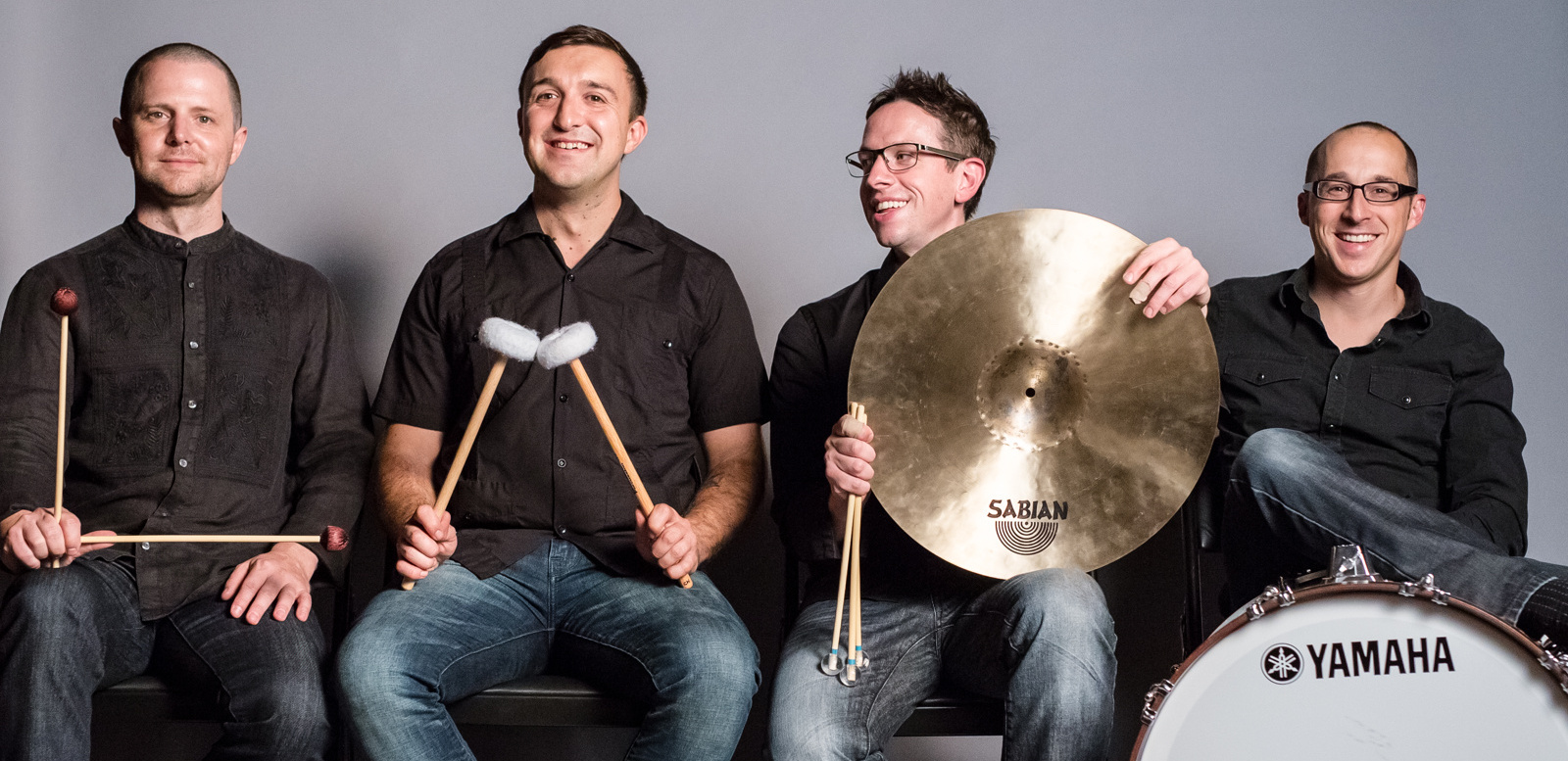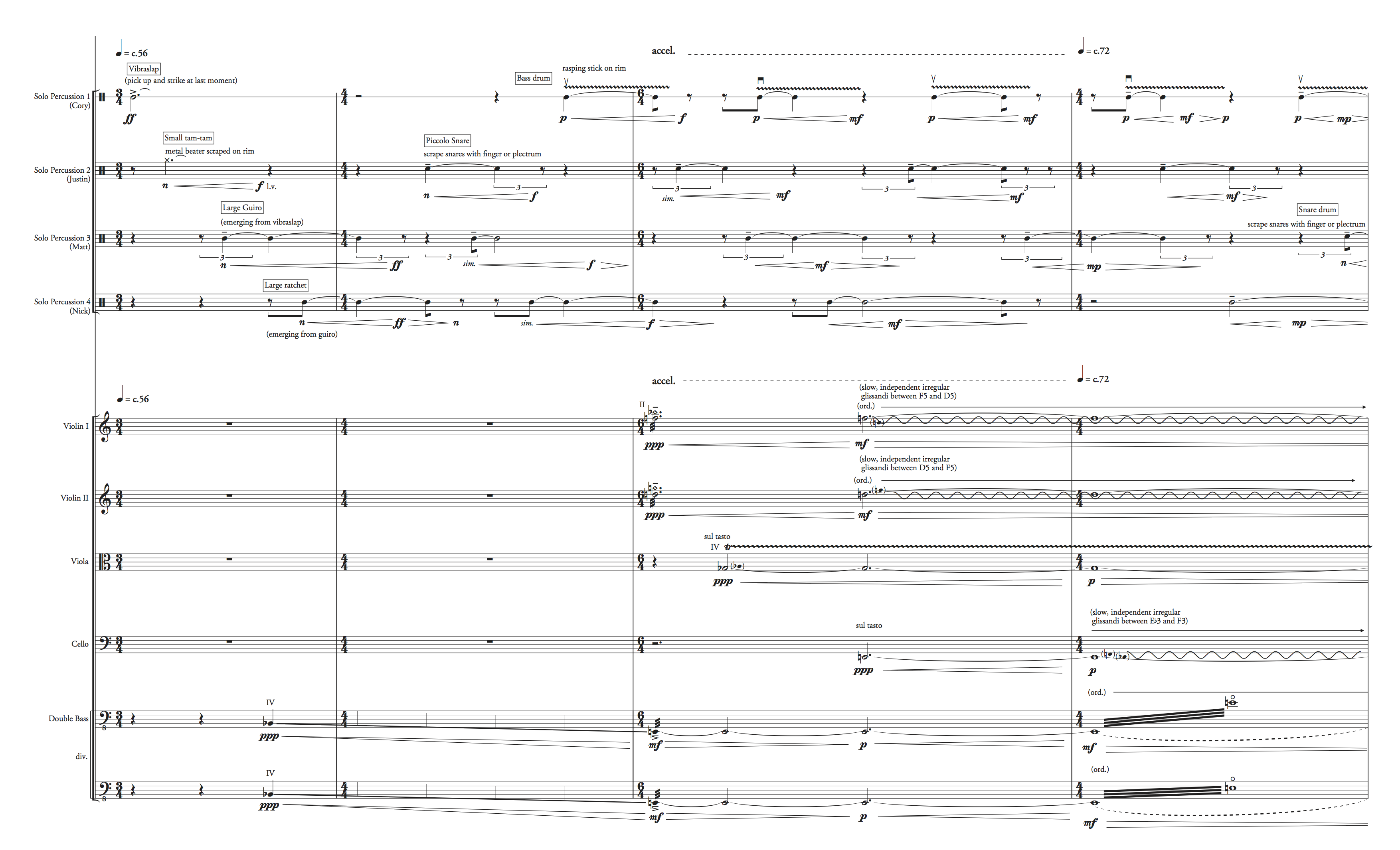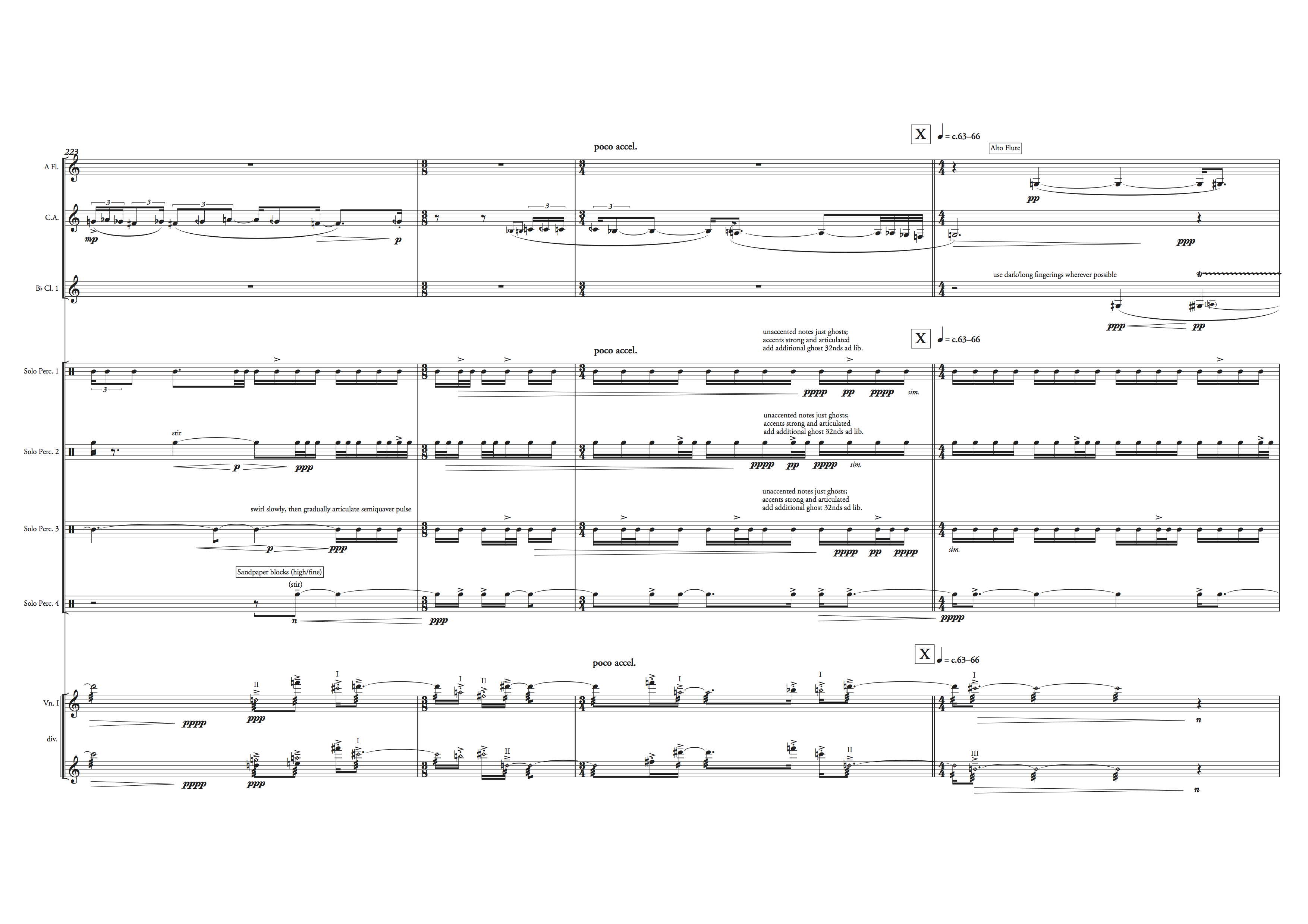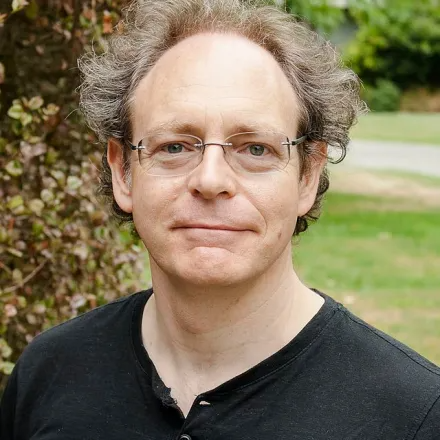Could you tell us a bit about 'Gyre (Ghosts with Accents)'?
A few sonic images came to me as soon as I’d been offered the commission – particularly the combination of steel drums, almglocken (tuned cowbells) and recorders that occurs towards the end of the piece. Usually titles come quite quickly for me – they often precede any compositional work – but in this case I wanted to let things take their musical course for as long as possible before I started worrying about the title. One thing I decided on was that the percussion quartet soloists would play predominantly “unpitched” percussion, so no marimbas, vibraphone etc. for them. They already have plenty of pieces for mallet instruments. I also wanted to exploit the instrumental possibilities offered by the large orchestra in the concert (Holst’s The Planets takes up the second half) and this suggested a few possibilities including a series of nine-note chords/pitch collections that recur throughout the piece, as well as some instrumental combinations. Many of the orchestral players have their moment in the sun, with solos or duets, and on the whole there’s not a great deal of tutti writing.
I’ll make the standard disclaimer about ‘Gyre’ not being programmatic, and as I mentioned earlier the title came quite late. I did, however, want to find away of acknowledging that the soloists and orchestra were located on different sides of the Pacific Ocean, so I read a number of accounts of Pacific voyages and myths, historical descriptions of what Europeans imagined the Pacific to be like and so on, but none of this gelled with the music I was writing. The opening of the piece has these swirling woodwind figures, and undulations in the strings, so at some point I thought of the word ‘gyre’ and on the idea of referring to the North and South Pacific Gyres, and the “Great Pacific Garbage Patch”, where a vast quantity of marine plastic is accumulating. That then led to incorporating marine debris into one of the solo percussionist’s stations, and the use of recovered and recycled plastic pellets – also called “nurdles”– by the percussionists on bass drum and tam-tam, so the piece has at least some vague “environmental” resonances.
 The Los Angeles Percussion Quartet.
The Los Angeles Percussion Quartet.
How did the opportunity to write 'Gyre' come about? Had you worked with the LAPQ before?
Gretchen La Roche, the CSO CEO, attended a performance by Mark Menzies of Muscae volitantes, one of my Queer Studies for solo violin, and asked whether I’d be interested in writing a piece for the LAPQ and CSO. Of course I was!
I hadn’t worked with the LAPQ before, but I’m lucky enough to have one of them – Justin DeHart – as a colleague at the University of Canterbury, so I was aware of their work and their skill and versatility.
The soloists play unpitched instruments almost entirely, setting up a clear unit of sonority (only at the very end do they play some steel pans). How have you approached the relationship between the solo group and the orchestra?
As I mentioned earlier, I knew pretty early on that the solo percussion parts would be mostly unpitched, but that they would also incorporate steel drums and almglocken, so that gave me some kind of sonic trajectory. I also wanted the soloists to be in right from the beginning, partly so they didn’t have to stand there like sacks of spuds waiting to come in. For the most part the orchestra comments on, or is triggered, by the percussion soloists, but towards the end they share material and mood.
 Bar 1-4, soloists and strings.
Bar 1-4, soloists and strings.
As seems unavoidable with percussion concertos, how did you manage the 'choreography' of the various instruments and their placement?
I had some ideas about how the percussion stations would look, and that some instruments would be shared, but the final detailed arrangement was done very much in consultation with the LAPQ, who pointed out a number of impracticalities or difficulties with my first ideas, and suggested some ingenious solutions to these problems. The LAPQ is, as they say, “solutions-focused”.
You allow the musicians some freedom at certain points. How did you approach integrating these sections in your work?
Each of the points where the quartet have some leeway for extemporisation is slightly different. I wanted to to use the quartet's skill and experience as improvisers in a few ways. There's a fairly lengthy passage where all four players move from muted wood instruments and objects to bright, metal sound sources, and rather than notate the transition precisely in every detail – which was my initial response – I'm trusting the players to do this in a more "organic" and spontaneous way, using their own selection of sound sources that fit the basic instruction. I guess you could say that I'm allowing each soloist to 'curate' their instrumentarium as well as finding a satisfying trajectory through it. As a counterpoint to this activity there's a long melodic line that passes between the first horn and first bassoon, and it's accompanied by quiet "comments" from harp, timpani, vibes and clarinet, all of which are precisely notated.
Towards the end of the piece there's a short solo section I've given Cory (percussion 1) which is entirely improvised, with just the text instruction "Introspective and intense; mostly quiet" so it'll be interesting to see how he interprets that!
 Bar 223-226.
Bar 223-226.
Are we right in saying this is your first piece for full orchestra? ('Unlearned Lines' for bass clarinet and wind band was the only other large instrumentation work of yours we could find). Is this by accident or design?
I did write a short piece for an APO reading about 20 years ago, but that’s been withdrawn, and for good reason. So yes, this is the first full orchestra piece proper.
I love orchestral music, but I don’t think I’ve been anyone’s radar in NZ as an orchestral composer. On the whole my music isn’t that easy to play, and not especially amenable to being knocked into vaguely presentable shape with a brief rehearsal. And without *some* prospect of performance it’s hard to find the motivation to spend months and months of unpaid time writing an orchestral piece.
Have you had to adapt your usual way of writing to accommodate the peculiarities of an orchestra?
I’ve tried to make things as simple and practicable as possible without compromising the musical material. There are many practical and acoustical considerations when writing for orchestra that you don’t need to think about when writing for a smaller group, or a group that rehearses together for a long time before a performance, so there is a slightly different approach, but I don’t think the actual process of composing or generating material is any different from “normal”.
Towards the end of the piece there is a clear thinning of texture and contrapuntal density, accompanied by the marine debris, leading to a slow chorale (Greta Thunberg even makes an appearance in a playing instruction). The intention seems very clear and devastating. Could you comment on this section?
This section is a very imperfect and shadowy version of the first things I heard in my head when offered the commission. It’s an extremely simple chorale, and one that I hope is positively clear and simple, rather than just being banal. It’s very difficult to verbalise what it “means” of course, but I don’t think anyone who pays even a slight amount of attention to the world news can fail to acknowledge that things are changing out there, and not for the better. Perhaps the thinning of texture represents in some way a focusing on simple things and straightforward, child-like, no-bullshit statements? But this is a piece of music, an artifice, not a political manifesto.
SOUNZ blog is designed for expressive discussion and debate amongst the arts and broader community. This is intended to be a safe space so please remember to keep comments respectful and avoid personal attacks, criticisms of specific organisations and defamatory language. Comments are moderated to ensure that they comply with SOUNZ’s Community guidelines.
